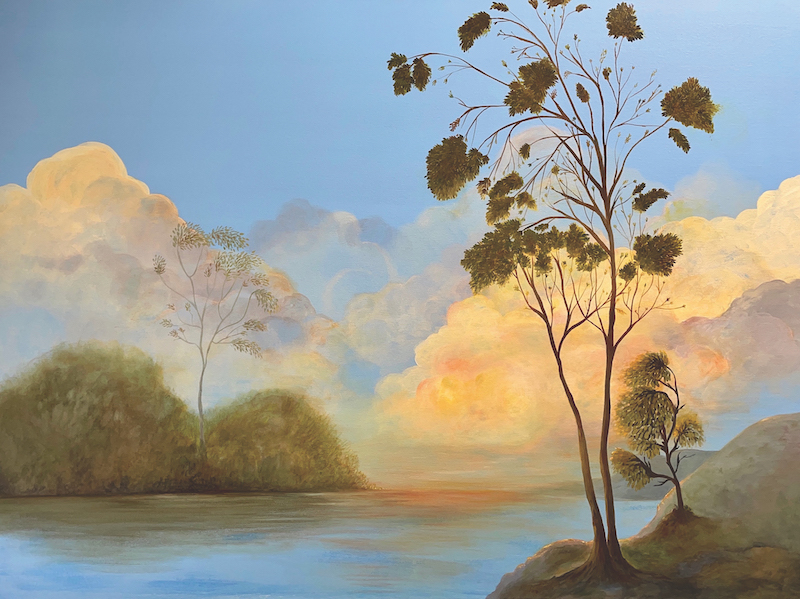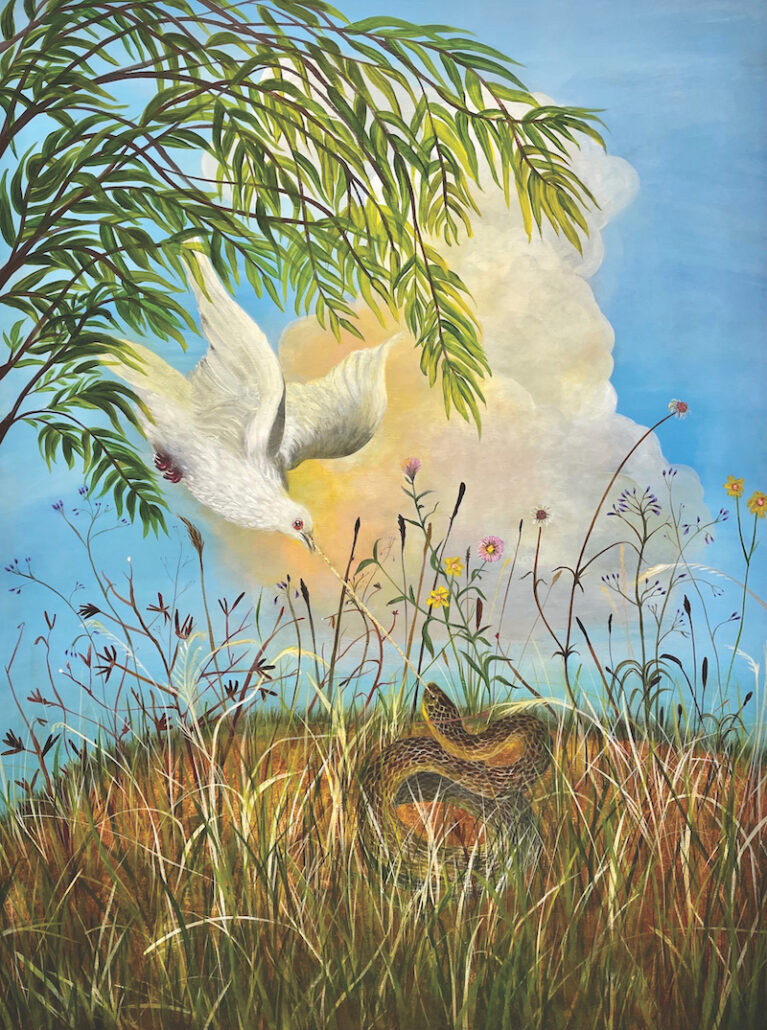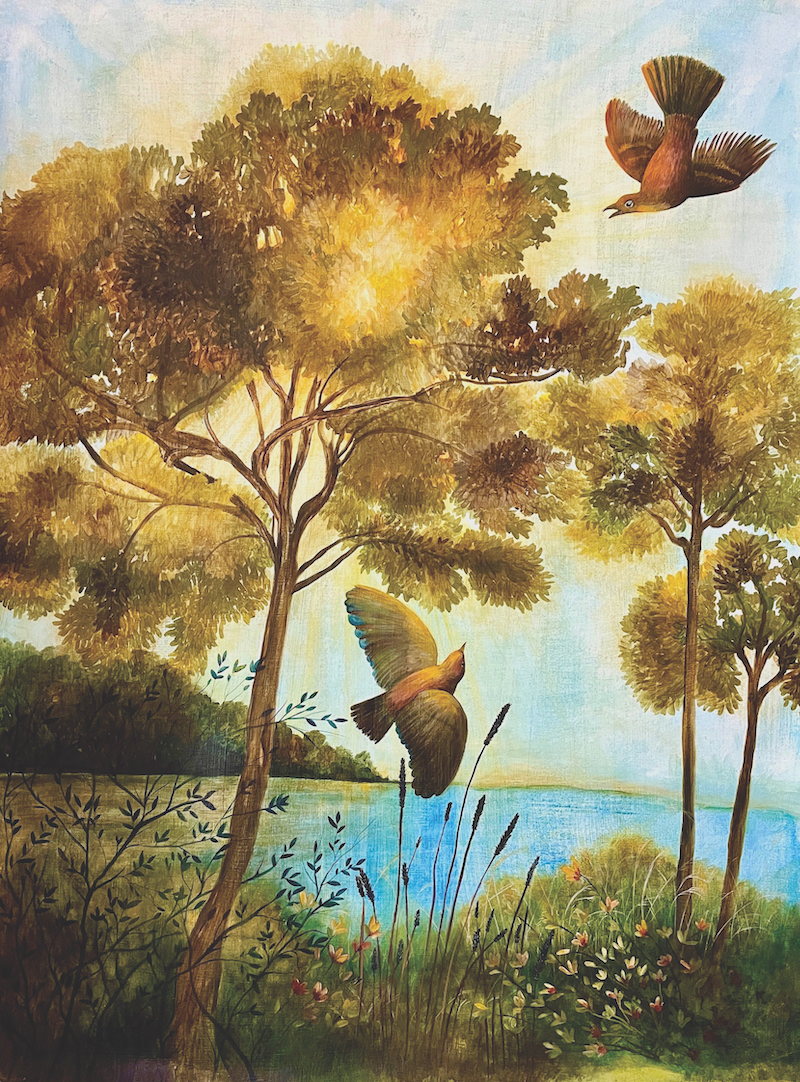Art Edit presents a selection of works from Gai Saunders who uses figurativism in novel and creative ways. Erin Irwin writes.
For WA-based artist Gai Saunders, it does not automatically follow that a practice which employs figurativism must necessarily value realism or be purely representational. “Representing nature as is has never been as interesting to me as taking elements such as a tree or a bird and reworking them into an imaginary scene”, says Saunders. “These references to the real world then act outside of the literal and are reinterpreted to reflect what is felt or sensed from the perspective of the mind’s eye”. Portraying outwardly idyllic landscapes, the artist constructs subtle narratives that can be read by the viewer, expanding upon the conventions of the landscape genre. These fantasies are often outwardly bucolic – a flight of swallows scatter as they dip and play, trees swaying gently – but a careful viewer might sense change on the horizon. Saunders draws her inspiration from the world around her, andnot just from the floral and faunal inhabitants of the Australian landscape – she paints to the tune of world events, poetry, and prose, and as we all know, these do not often tell straightforward stories. Saunders’ works draw their power from her skilful figurativism, reality clashing with the imaginary. Weather becomes metaphor and natural cycles come quietly unspooled, quiet portents hidden within tender country scenes drawing power from their lifelike execution.
Above: Gai Saunders, The Truce, 2023. Acrylic and acrylic ink on archival paper, 180 x 78cm. Courtesy: the artist.



